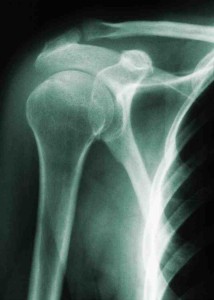
Have you been taught by your Physical Therapist, Yoga teacher, Pilates teacher or trainer to press your shoulders back and down for good posture?
What if, instead, you were to ease your shoulders up; rotate them slightly back to open the chest; and then allow them to gently drop into place. Then forget about them and move on with your day.
Up and open, not back and down?
Shirley Sahrmann, an influential Physical Therapist, first introduced me to this concept. Her work emphasizes that many, if not most, pain and orthopedic problems are created and maintained by faulty postures and movement patterns.* When I volunteered to be a guinea pig in her continuing ed class, she curtly informed me that I hold my shoulders in an overly depressed position. Really? But wait — I learned to do this as a dancer for good posture. Now you’re telling me that the years-long habit of pressing my shoulders back and down may actually have caused chronic shoulder pain and dysfunction?
Have you never secretly wondered about the instruction to “press your shoulders back and down” — that it sounds, and looks, just a little like the old military instruction “stand up straight, chest out, shoulders back.” Though well-intentioned, it may not be the best advice to correct either internally rotated shoulders or an habitual slouch. Yes, it might facilitate chest opening and elongate tight pectoralis muscles. You may even activate the posterior shoulder blade and postural muscles, like the lower trapezius. Unfortunately, the rhomboids may also become overly activated, too. According to Shirley, shortened rhomboids are not desirable. Besides, you are probably freezing other shoulder blade muscles, like the important serratus anterior, into a chronically tense and overly elongated position. This is NOT desirable. Muscles need to be free and balanced to move bones, especially those of the shoulder blades.
Besides, holding almost any muscle in a static position isn’t usually a good idea. It can create a new host of problems.
Ask yourself, is it possible that pressing your shoulders back and down may actually increase tension in the cervical/shoulder complex and contribute to neck strain and pain? Might it also cause you to press the top of your shoulder, the acromion, down onto the humeral head, creating a moment of impingement within the shoulder joint, contributing to wear and tear of the rotator cuff or a frozen shoulder? The shoulders, particularly in men and women in their 40′s, 50′s and 60′s, not infrequently become problematic through impingement syndromes, frozen shoulder or rotator cuff pulls, strains and tears.
Just for now, try easing your shoulders up, back and then relax them into gravity, easing them into place. You can accomplish the same desired goal of decreasing rounded shoulders, while at the same time creating more relaxation and ease in your neck and shoulders.
This is a Sharon Gary article and has been reposted with permission. Sharon Gary is a rare combination of Physical Therapist, Yoga Teacher and Yoga Therapist. Her blog is known as “Yoga Physical Therapy“. The original post is here.
You may also like: “Arthritis Sufferer Discovers Relief from Pain“
